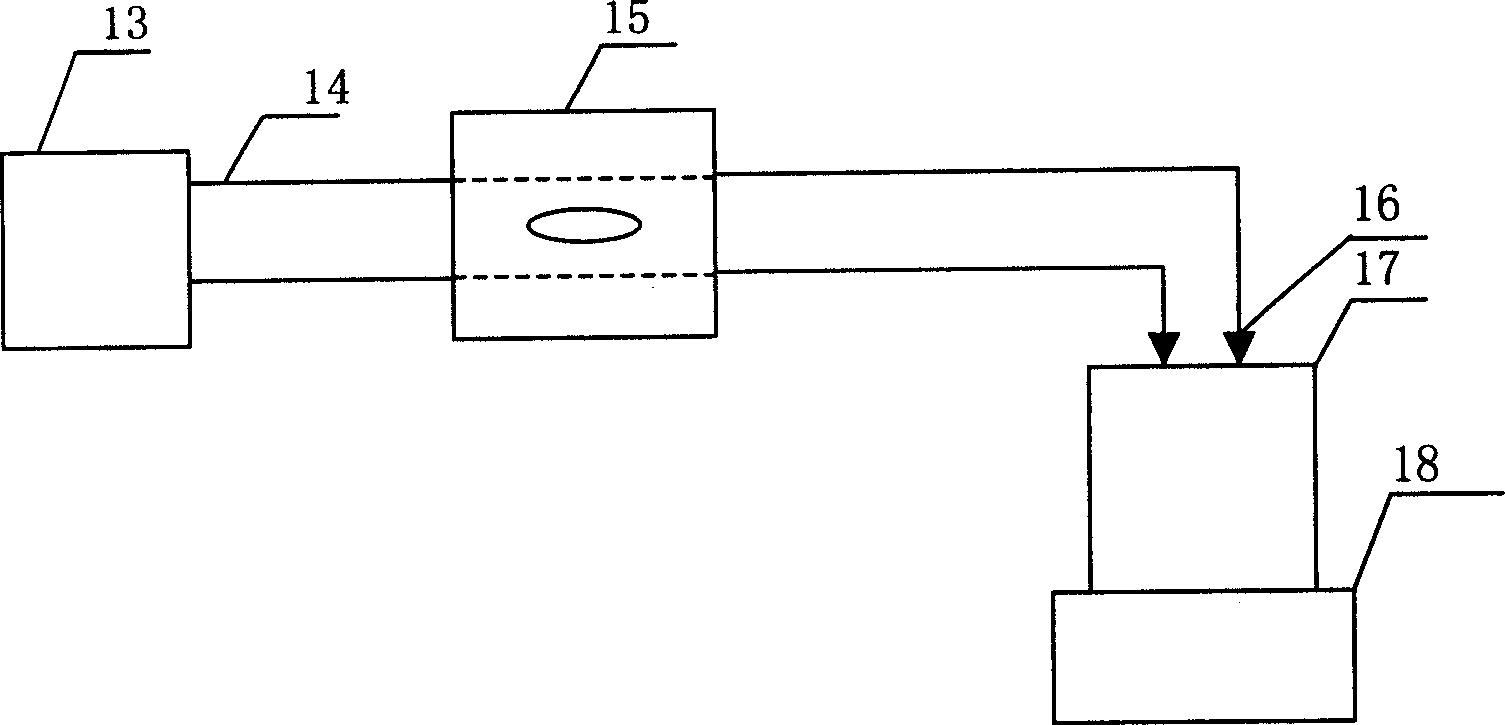Lactobacillus fixed cell in-situ separating-fermenting lactic-acid production process
A technology of immobilized cells and in-situ separation, which is applied in the field of lactic acid preparation, can solve the problems that the fermentation broth cannot pass through continuously and uniformly, block the entrance of the resin column, and reduce the number of active cells, and achieve long service life, low consumption, and fast proliferation Effect
- Summary
- Abstract
- Description
- Claims
- Application Information
AI Technical Summary
Problems solved by technology
Method used
Image
Examples
Embodiment 1
[0025] A. Cell immobilization
[0026] (a) Preparation of bacterial suspension: Cultivate lactic acid bacteria to the end of exponential growth, centrifuge for 10 minutes with a centrifuge, the centrifugal force is 9000g, discard the supernatant, break up into bacterial suspension with sterilized normal saline of equal weight, Take 22-38.7 grams of the bacterial suspension;
[0027] (b) Preparation of the mixed solution of embedding agent and bacterial suspension: take 8-12 grams of polyvinyl alcohol and 2-4 grams of sodium alginate and dissolve them in 100 milliliters of distilled water, heat them in a water bath to dissolve them, mix them evenly and sterilize them, After being cooled to 40 DEG C, join in the bacterium suspension of (a) together with the 2% carrageenan distilled aqueous solution of 22~38.7 gram sterilizations, be bacterium suspension by weight ratio: 2% carrageenan solution: 8~12 Mixture of % polyvinyl alcohol and 2-4% sodium alginate = 1:1:3-5 mixed evenly;...
Embodiment 2
[0039] Select polyvinyl alcohol, sodium alginate, and carrageenan to prepare four different proportions of embedding agents according to the percentage concentrations in Table 1, which are used to make bead-shaped immobilized cell pellets. The following methods are used to test the embedded bacteria Bead strength: place embedded particles of equal particle size between two glass slides, put a weight on the glass slide until the particles are crushed, use the weight of the weight to characterize the strength of the particles, and measure its indicators. The results are shown in Table 1.
[0040] Table 1 Quality test of embedding agents prepared with different component concentrations
[0041] Sequence Polyethylene Seaweed Carrageenan Bacterial content Transformation rate Mechanical Particle phenomenon
[0042] No. Enol (%) Sodium Acid (%) (%) (%) Strength (g)
[0043] (%)
[0044] 1 6 1 2 0.1 90.20 <50 adhesion
[0045] 2 8 2 2 0.1 90.63 >50 ...
Embodiment 3
[0050] Lactic acid was produced by the technique of Example 1, and the immobilized lactic acid bacterial beads of the present invention were repeatedly used three times. Under the exact same conditions, unimmobilized lactic acid bacteria beads were used for production. The product concentration results are compared as shown in Table 2.
[0051] reaction system
[0052] It can be seen from the test results that although the product concentration of the immobilized lactic acid bacteria beads of the present invention is slightly lower than that of the unimmobilized bacteria liquid when used for the first time, it can be used repeatedly and can maintain the reactivity.
PUM
| Property | Measurement | Unit |
|---|---|---|
| pore size | aaaaa | aaaaa |
| purity | aaaaa | aaaaa |
| Bronsted acidity | aaaaa | aaaaa |
Abstract
Description
Claims
Application Information
 Login to View More
Login to View More - R&D Engineer
- R&D Manager
- IP Professional
- Industry Leading Data Capabilities
- Powerful AI technology
- Patent DNA Extraction
Browse by: Latest US Patents, China's latest patents, Technical Efficacy Thesaurus, Application Domain, Technology Topic, Popular Technical Reports.
© 2024 PatSnap. All rights reserved.Legal|Privacy policy|Modern Slavery Act Transparency Statement|Sitemap|About US| Contact US: help@patsnap.com









